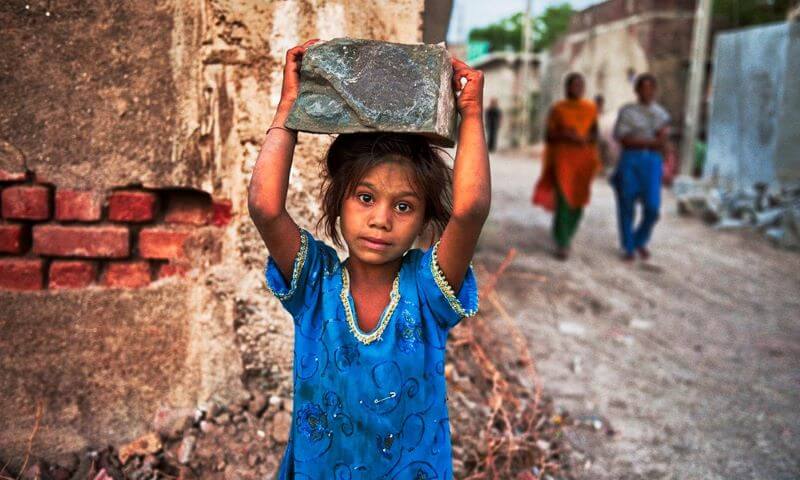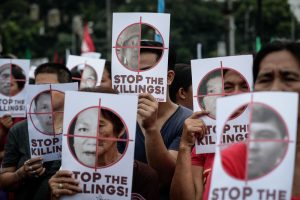Table of Contents
Introduction
“I am the child.
All the world waits for my coming. All the earth watches with interest to see what I shall become. Civilization hangs in the balance, For what I am, the world of tomorrow will be. I am a child. You hold in your hand my destiny. You determine, largely, whether I shall succeed or fail. Give me, I pray to you, these things that make for happiness. Train me, I beg you, that I may be a blessing to the world”.
Mamie Gene Come
With the advent of the modern industrial system there came a tendency among the employers to earn easy and quick profits at less expenses. That is why the employment of children in factories at a low rate of remuneration became a frequent practice. They had to work hard for excessive hours under unhealthy and hazardous conditions.
the International Labour Organisation has been playing an important role in the process of gradual elimination of child labour and to protect child from industrial exploitation. It has focused five main issues :-
- Prohibition of child labor.
- Protecting child labour at work.
- Attacking the basic causes of child labour.
- Helping children to adapt to future work.
- Protecting the children of working parents.
Till now 18 Conventions and 16 recommendations have been adopted by the ILO in the interest of working children all over the world.
What is Child labour & Child Work
The term ‘children labor’ is a convenient expression for “the labor of children“, and has a well recognised though rather vague meaning. Child labour is often used synonymously for ’employed child’ or ‘working child‘. In this sense it is coextensive with any work done by a child for gain.
A distinction is often made between child work and child labour.
‘Child Work’ refers to occasional light work done by children, which in most societies is considered to be an integral part of the child’s socialization process. While helping parents at home and in family farms, children learn to take responsibility and pride in their own activities, acquire certain skills and prepare themselves for the tasks of future adulthood.
It includes:
- Light work where children learn to take responsibilities.
- Respect for Children’s right to health & education.
- It is Occasional and legal.
‘Child Labour’ implies something different in which young people are being exploited, or overworked or deprived of their rights to health, education or just to childhood. It impairs their health, their overall physical, mental and social growth.
It includes:
- It involves Hard & hazardous work, exploitation.
- Deprivation of rights to health & education.
- Constant, long hours and Illegal
- It is basically the need to earn some money.
Definition Of Child Labour
Homer Folks (Chairman of the United States National child Labour committed) defines Child Labour as ”Any work by a child that interferes with his full physical development and his opportunities for a desirable minimum of education or his needed recreation”.
The term ‘child labour’ is usually interpreted in two different sense:
- Economic Practice: In this context, it signifies employment of children to gain full occupations with a view to adding to the labor income of the family.
- Social Evil: In assessing the nature and extent of social evil, labor is generally used therefore, it becomes necessary to take into account the character of the job on which the children are engaged, the dangers to which they are exposed and the opportunities of development which they have been denied.
According to the UNICEF, it is every important to distinguish between work that is beneficial and work that is intolerable-and to recognise that much Child Labour. Therefore, it believes that child labour is exploitative, if it involves;
- Full-time work at an early age;
- Too many hours spent working;
- Work that exerts undue physical, social or psychological stress on children’s;
- Working on the streets under bad conditions;
- Inadequate pays;
- Too much responsibility;
- Work that hamper access to education
- Work that undermines children’s dignity and self esteem such as slavery or bonded labor and sexual exploitations;
- Work that is detrimental to full social and psychological development.
Constitutional Rights & Child Labour
The constitution of India is a legislative social document which aims at evolving a just social order covering all facets of the society. The constitution of India came into effect from 26th, January 1950 and shed some light on the rights of the children. Before its enactment, there were bits and pieces of various legislations which had dealt with child labour and its exploitation. The implementation of which was not only tardy but half-hearted.
The constitution of India recognises the rights of the children for the first time and included several articles dealing with their literacy, livelihood, development of childhood, non-discrimination in educational sphere, compulsory and free education and prohibition of their employment in factories, mines and hazardous employment.
The constitutional provisions dealing with welfare of children are explicit in nature. The explicit provisions dealing with the child welfare are:
- Article 15(3) empowering the state to make special provisions for women and children.
- Article 24 prohibiting the employment of children in factories, etc.
- Article 39(e) & (f) obligates the state to safeguard the health of children and afford opportunities to grow with dignity,
- Article 45 provides for free and compulsory education for children.
The implicit provision dealing with the welfare of children under constitution are as follows:
- Article 14 provides Equality before law,
- Article 23 Prohibits trafficking in human beings and forced labor,
- Article 38 endeavors to secure a social order for the protection of welfare of the people,
- Article 41 provides Right to work, to education and to public assistance in certain cases,
- Article 42 provides Provisions for just and human condition of work and maternity relief,
- Article 46 Promotes educational and economic interests of schedule castes, schedule tribes and other weaker sections, and
- Article 47 obligates the state to raise the level of nutrition and the standard of living and to improve public health.
Fundamental Rights Of Children
Part 3 of The Constitution contains a long list of fundamental rights. It is known as Magna Carta Of India. These rights are regarded as fundamentals because they are most essential for the individual and for the development of his full intellectual, moral and spiritual potential. The negation of these rights will keep the individual’s personality underdeveloped.
The children have rights to enjoy all the fundamental rights, which are guaranteed to the citizens of India under Article 15, 16, 19 and 29 of the constitution, because the children in India are also citizens of India. The fundamental rights, which are available only to the citizens, are:
- The right not to be discriminated against on the ground of religion, race, caste, sex or place of birth (Article 15).
- The right to equality of opportunity in the matter of public employment (Article 16).
- The right to six freedoms enumerated in Article 19, i.e. freedom of speech and expression, assembly, association, movement, residence and profession.
- Cultural and educational rights conferred by (Articles 29 & 30).
There are some fundamental rights expressly provided for children and some other fundamental rights which are also applicable for children such as:
- Article 14 guarantees equality before laws and protection of laws to all persons within the territory of India.
- Article 21 provides for the protection of life and personal liberty of the people including children. “Right to life” in the context has been held to be not a mere animal existence but it is to be with human dignity and values.
- Article 23 of the constitution prohibits traffic in human beings, beggars and other similar forms of forced labor and exploitation.
Although this Article does not specifically speak of children, yet it is applied to them and is more relevant in their context because children are the most valuable section of the society and easily exploited due to poverty.
- Article 24 prohibits the employment of children below the age of 14 years in factories, mines or hazardous employment. It is an additional precautionary measure securing distributive justice to children.
Landmark Case
M.C. Mehta vs State Of Tamil Nadu And Others on 10 December, 1996, The judgement is a historic judgement on child labour, which elaborated the situation of child labour in India. It outlines the vision of the Constitution with respect to children.
Facts Of The Case
Sivakasi, a town in the state of Tamil Nadu was one of the worst-hit towns in terms of child labour in the country. A solicitous lawyer, M.C. Mehta concerned by the unbearable state of child labour in the town filed a petition under Article 32 of the Indian Constitution. He contended that the employment of children in hazardous matchstick factories was morally preposterous and constitutionally invalid. The respondent government did not oppose the claims and submitted ideas to deplete the problem. Therefore, the court issued certain directions suggesting means to improve the lives of the affected children. However, subsequent to this order an accident occurred in one of Sivakasi’s fireworks factories. The court took suo moto cognizance of this incident.
Issues Before The Court
The main issue before the court was to provide an effective alternative means to curb the employment of children in hazardous labor. The court also dealt with issues related to the education, growth and development of children.
Causes Of Child Employment
Supreme Court was of the view that the “Extreme poverty, lack of opportunity for gainful employment and intermittancy of income and low standards of living are the man reasons for the wide prevalence of child labour. Though it is possible to identify child labour in the organised sector, which form a minuscule of the total child labour, the problem relates mainly to the unorganised sector where utmost attention needs to be paid. The problem is universal but in our case it is more crucial.”
Supreme Court also pointed out the findings of Indian Child Labour by Dr. J.C. Kulshreshtha which revealed the main causes of child labour in india.
- Poverty;
- Low wages of the adult;
- Unemployment;
- Absence of schemes for family allowance;
- Migration to urban areas;
- LARGE families;
- Children being cheaply available;
- Non-existence of provisions for compulsory education;
- Illiteracy and ignorance of parents; and
- Traditional attitudes
Directions Issued By the Court
S.C. also gave certain directions on the issue of elimination of child labour. The main features of judgment are as under:
- Survey for identification of working children every 6 months.
- Withdrawal of children working in hazardous industry and ensuring their education in appropriate institutions;
- Contribution of Rs.20,000/- per child to be paid by the offending employers of children to a welfare fund to be established for this purpose;
- Employment to one adult member of the family of the child so withdrawn from work and it that is not possible a contribution of Rs.5,000/- to the welfare fund to be made by the State Government;
- Financial assistance to the families of the children so withdrawn to be paid -out of the interest earnings on the corpus of Rs.20,000/25,000 deposited in the welfare fund as long as the child is actually sent to the schools;
- Regulating hours of work for children working in non-hazardous occupations so that their working hours do not exceed six hours per day and education for at least two hours is ensured. The entire expenditure on education is to be borne by the concerned employer.
- The implementation of the direction of the Hon’ble Supreme Court is being monitored by the Ministry of Labour and compliance of the directions have been reported in the form of Affidavits to the Hon’ble Court on the basis of the information received from the State/UT Governments.
Similarly, in In Rajangam, Secretary,District Beedi Workers’ Union And Ors Vs State Of Tamil Nadu, Supreme Court reiterated its judgment and held that:
“Tobacco manufacturing indeed has health hazards. Child labor in this trade should therefore be prohibited as far as possible and employment of child labour should be stopped either immediately or in a phased manner to be decided by the State Government but within a period not exceeding three years from now.The provisions of Child Labour Abolition Act,1986 should be strictly implemented.”
Conclusion
Children are gifts of God. They are blooming flowers in the garden. It is, therefore, a duty on the part of each member of society to protect those flowers from each and every kind of damaging effect. The energy, genius and mental faculty of every child should be properly channelised, trained and educated for the socio-economic and politico-cultural growth of the country.



